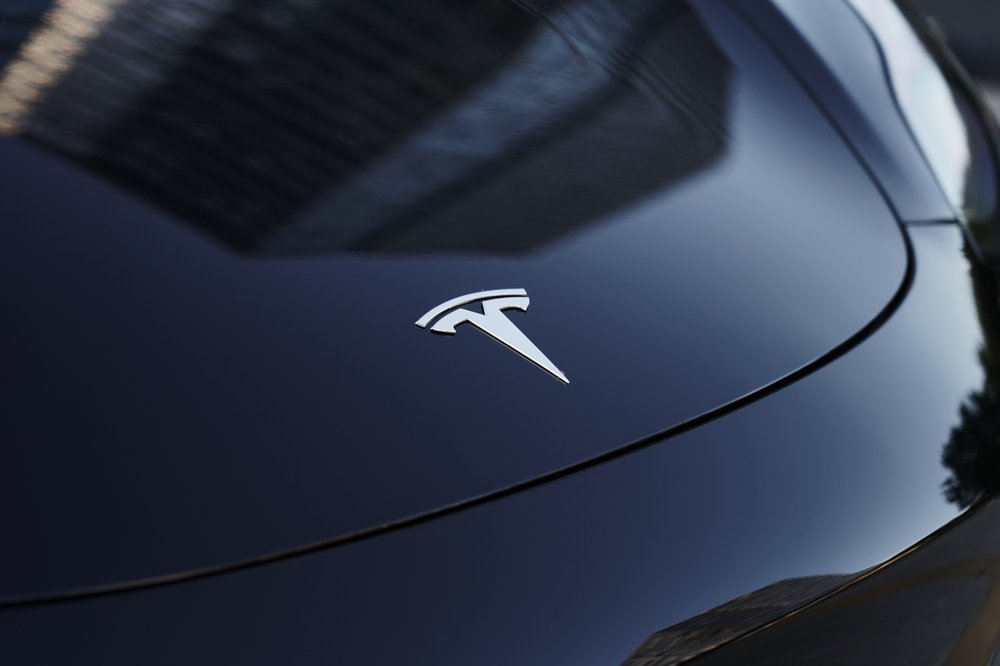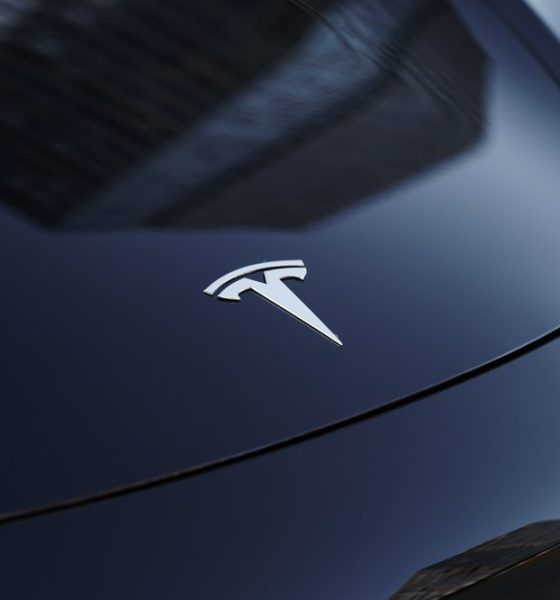

News
Tesla ‘Model 2,’ mobile phone, and Tom Zhu ‘2nd-in-command’ rumors debunked by China exec
Tesla doesn’t have a PR team, and even on the off chance that the company responds to a media outlet, its responses tend to be short and succinct. This came to a head last month when rumors about a production shutdown in Giga Shanghai during December’s last week due to weakening demand were reported by several mainstream news media outlets. In response to the wave of reports, Tesla China simply commented that the reports were “untrue.”
As it turned out, what Tesla China really meant was that the reports were not entirely accurate. Giga Shanghai was indeed pausing its production in the last week of December, but it would be due to maintenance for the plant’s lines, not a demand issue. While one could argue that Tesla China’s response could have been better — and it definitely could have been better — it was already far more of a response than what Tesla typically puts out.
Tesla China Exec Interview
In the United States, Tesla usually doesn’t even issue official responses. Elon Musk posts about Tesla frequently and he clarifies issues on Twitter, but outside of that, there is very little that the company does to respond to rumors or reports. This was why it was quite a welcome development when Tesla VP Grace Tao had an interview with Chinese media. In it, she discussed a number of pertinent topics, such as Tesla’s vehicle pricing strategy in China, as well as some rumors surrounding the company.
Rumors about Tesla are abounding, and among the most notable are arguably the “Model 2,” the vehicle believed to be the cheaper successor to the Model 3 and Model Y; the “Pi Phone,” a mobile phone that’s been spamming a number of YouTube channels for some time now; and the promotion of Tesla China’s Tom Zhu as “second-in-command” in the company. Grace Tao’s response was quick and direct, and she noted that the “rumors are not true.”
Now, if you could see a parallel between the denial that the VP recently gave to Tesla China’s response to last month’s reports of Giga Shanghai’s shutdown, you are not alone. With this in mind — and if one could speculate to a point — then perhaps Tao’s denial could also be read as the rumors not being entirely accurate. Emphasis on the “entirely.”
Model 2, Mobile Phone, and Tom Zhu
Tesla, for one, has been working on a smaller vehicle platform for some time now. Elon Musk has been pretty dismissive of the vehicle for some time, favoring a dedicated, futuristic Robotaxi with no steering wheels instead, but he has shared some details about the upcoming car in the past. Musk has, for example, noted that Tesla’s affordable car would exceed the Model 3 and Model Y’s production output. Its platform would also be roughly the cost of the Model 3 and Model Y’s. It’s undeniable that Tesla is working on an affordable car, so the VP’s recent denial can also simply mean that the “not true” part of the rumor was the speculated name of the EV, “Model 2.”
As for the Tesla “Pi Phone,” Elon Musk has noted in the past that he is not closed to the idea of making a mobile phone if Apple or Google end up blocking Twitter, but that’s about it. Unlike what’s suggested in spam videos on YouTube, the “Tesla Phone” is simply a fun idea, nothing more. Tom Zhu’s promotion has not been confirmed by Tesla, but signs are pointing to the executive taking a larger role in the company. That being said, Zhu’s position does not necessarily have to be “second-in-command” to Elon Musk. His position, if speculations do prove accurate, could simply be created to accurately describe his larger responsibilities in the company.
Tesla VP Grace Tao’s interview with local Chinese media can be viewed here.
The Teslarati team would appreciate hearing from you. If you have any tips, contact me at maria@teslarati.com or via Twitter @Writer_01001101.

News
Tesla China delivery centers look packed as 2025 comes to a close
Needless to say, it appears that Tesla China seems intent on ending 2025 on a strong note.

Tesla’s delivery centers in China seem to be absolutely packed as the final days of 2025 wind down, with photos on social media showing delivery locations being filled wall-to-wall with vehicles waiting for their new owners.
Needless to say, it appears that Tesla China seems intent on ending 2025 on a strong note.
Full delivery center hints at year-end demand surge
A recent image from a Chinese delivery center posted by industry watcher @Tslachan on X revealed rows upon rows of freshly prepared Model Y and Model 3 units, some of which were adorned with red bows and teddy bears. Some customers also seem to be looking over their vehicles with Tesla delivery staff.
The images hint at a strong year-end push to clear inventory and deliver as many vehicles as possible. Interestingly enough, several Model Y L vehicles could be seen in the photos, hinting at the demand for the extended wheelbase-six seat variant of the best-selling all-electric crossover.
Strong demand in China
Consumer demand for the Model Y and Model 3 in China seems to be quite notable. This could be inferred from the estimated delivery dates for the Model 3 and Model Y, which have been extended to February 2026 for several variants. Apart from this, the Model Y and Model 3 also continue to rank well in China’s premium EV segment.
From January to November alone, the Model Y took China’s number one spot in the RMB 200,000-RMB 300,000 segment for electric vehicles, selling 359,463 units. The Model 3 sedan took third place, selling 172,392. This is quite impressive considering that both the Model Y and Model 3 are still priced at a premium compared to some of their rivals, such as the Xiaomi SU7 and YU7.
With delivery centers in December being quite busy, it does seem like Tesla China will end the year on a strong note once more.
News
Tesla Giga Berlin draws “red line” over IG Metall union’s 35-hour week demands
Factory manager André Thierig has drawn a “red line” against reducing Giga Berlin’s workweek to 35 hours, while highlighting that Tesla has actually increased its workers’ salaries more substantially than other carmakers in the country.

Tesla Giga Berlin has found itself in a new labor dispute in Germany, where union IG Metall is pushing for adoption of a collective agreement to boost wages and implement changes, such as a 35-hour workweek.
In a comment, Giga Berlin manager André Thierig drew a “red line” against reducing Giga Berlin’s workweek to 35 hours, while highlighting that Tesla has actually increased its workers’ salaries more substantially than other carmakers in the country.
Tesla factory manager’s “red line”
Tesla Germany is expected to hold a works council election in 2026, which André Thierig considers very important. As per the Giga Berlin plant manager, Giga Berlin’s plant expansion plans might be put on hold if the election favors the union. He also spoke against some of the changes that IG Metall is seeking to implement in the factory, like a 35-hour week, as noted in an rbb24 report.
“The discussion about a 35-hour week is a red line for me. We will not cross it,” Theirig said.
“(The election) will determine whether we can continue our successful path in the future in an independent, flexible, and unbureaucratic manner. Personally, I cannot imagine that the decision-makers in the USA will continue to push ahead with the factory expansion if the election results favor IG Metall.”
Giga Berlin’s wage increase
IG Metall district manager Jan Otto told the German news agency DPA that without a collective agreement, Tesla’s wages remain significantly below levels at other German car factories. He noted the company excuses this by referencing its lowest pay grade, but added: “The two lowest pay grades are not even used in car factories.”
In response, Tesla noted that it has raised the wages of Gigafactory Berlin’s workers more than their German competitors. Thierig noted that with a collective agreement, Giga Berlin’s workers would have seen a 2% wage increase this year. But thanks to Tesla not being unionized, Gigafactory Berlin workers were able to receive a 4% increase, as noted in a CarUp report.
“There was a wage increase of 2% this year in the current collective agreement. Because we are in a different economic situation than the industry as a whole, we were able to double the wages – by 4%. Since production started, this corresponds to a wage increase of more than 25% in less than four years,” Thierig stated.
News
Tesla is seeing a lot of momentum from young Koreans in their 20s-30s: report
From January to November, young buyers purchased over 21,000 Teslas, putting it far ahead of fellow imported rivals like BMW and Mercedes-Benz.

Tesla has captured the hearts of South Korea’s 20s-30s demographic, emerging as the group’s top-selling imported car brand in 2025. From January to November, young buyers purchased over 21,000 Teslas, putting it far ahead of fellow imported rivals like BMW and Mercedes-Benz.
Industry experts cited by The Economist attributed this “Tesla frenzy” to fandom culture, where buyers prioritize the brand over traditional car attributes, similar to snapping up the latest iPhone.
Model Y dominates among young buyers
Data from the Korea Imported Automobile Association showed that Tesla sold 21,757 vehicles to the 20s-30s demographic through November, compared to BMW’s 13,666 and Mercedes-Benz’s 6,983. The Model Y led the list overwhelmingly, with variants like the standard and Long Range models topping purchases for both young men and women.
Young men bought around 16,000 Teslas, mostly Model Y (over 15,000 units), followed by Model 3. Young women followed a similar pattern, favoring Model Y (3,888 units) and Model 3 (1,083 units). The Cybertruck saw minimal sales in this group.
The Model Y’s appeal lies in its family-friendly SUV design, 400-500 km range, quick acceleration, and spacious cargo, which is ideal for commuting and leisure. The Model 3, on the other hand, serves as an accessible entry point with lower pricing, which is valuable considering the country’s EV subsidies.
The Tesla boom
Experts described Tesla’s popularity as “fandom culture,” where young buyers embrace the brand despite criticisms from skeptics. Professor Lee Ho-geun called Tesla a “typical early adopter brand,” comparing purchases to iPhones.
Professor Kim Pil-soo noted that young people view Tesla more as a gadget than a car, and they are likely drawn by marketing, subsidies, and perceived value. They also tend to overlook news of numerous recalls, which are mostly over-the-air software updates, and controversies tied to the company.
Tesla’s position as Korea’s top import for 2025 seems secured. As noted by the publication, Tesla’s December sales figures have not been reported yet, but market analysts have suggested that Tesla has all but secured the top spot among the country’s imported cars this year.








